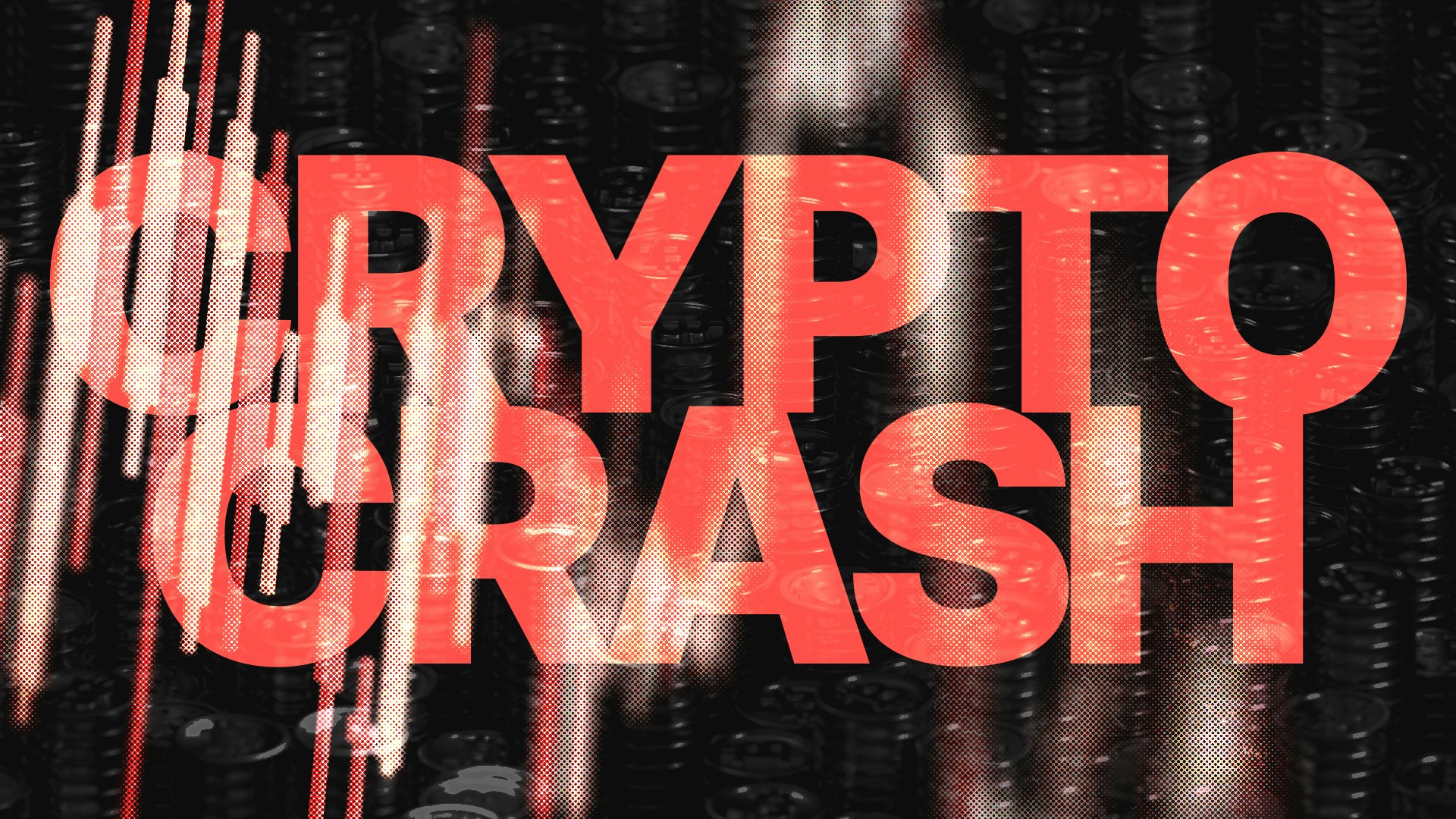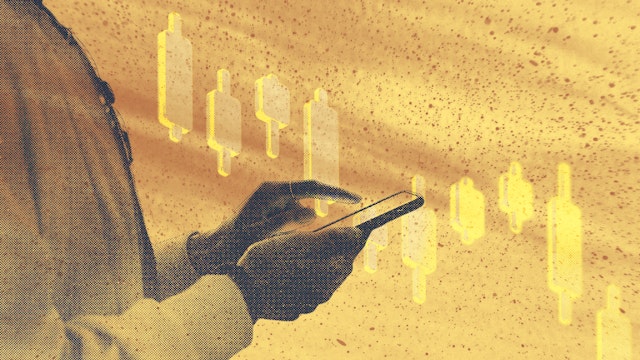Why is Crypto Crashing? Here is the Explainer
Why is crypto crashing today? Here is the explanation of some of the reasons why.
In this article...
- Crypto prices can be very volatile
- Here are some reasons as to why crypto prices crash
- Prices can can up as fast as they go down

Why is crypto crashing? The cryptocurrency market is experiencing a significant downturn that started on August 5, 2024.
The crypto media have been referring to the price falls as a crypto bloodbath.
While there is no standard definition for such a term, a bloodbath in this context is akin to a major volatile event coinciding with complex economic and political events. So is it a “bloodbath”?
Not yet, so everyone calm the farm. There is a decline in price, however.
Several interconnected factors appear to be driving this decline. While market volatility is not unusual, especially in crypto, this particular crash coincides with a complex economic and political landscape. So let’s break it down and try to work out what is driving the fall.
Election year cycles and market uncertainty
Historically, election years often bring about a degree of market correction during this period.
This phenomenon is attributed to uncertainty surrounding potential policy changes and their impact on various sectors.
As we approach the upcoming US election, investors may act with caution, leading to a temporary dip in prices.
Historically, election years have been associated with market volatility. It’s going to be a choppy ride, at least until whoever is elected settles into the job.
Japan's shifting financial landscape
Japan's economic decisions are also playing a role in the current crypto crash. Japanese investors have historically been big players in the US stock market. They would borrow money to invest, taking advantage of very low interest rates. But! The Bank of Japan has recently started raising interest rates after a long period of keeping them very low. This move is aimed at combating inflation and stabilising the economy. However, higher interest rates mean it costs more to borrow money. This is making borrowing more expensive. Japanese investors are facing higher costs for the money they borrowed.
Selloff
To deal with these increased costs, Japanese investors are selling some of their investments, including US stocks. They need the cash to cover their debt obligations back in Japan.
While the Bank of Japan's interest rate increase was modest (0.25%), it's not really the primary concern. Market anticipation of potential US interest rate cuts is weakening the US dollar.
Additionally, Japanese investors are selling US stocks and converting the proceeds into Japanese Yen to repay their loans. This increased demand for Yen is further strengthening it against the US dollar, explaining the 10% appreciation in the past 30 days.
Essentially, Japanese investors are selling their US assets and converting them to Yen to mitigate potential further losses due to currency fluctuations.
Domino effect
This massive sell-off doesn't just affect the US stock market. The money they get from selling is flowing back into Japan, and this sudden shift in money movement is causing ripples across other financial markets. Cryptocurrencies are part of these global markets and are feeling the effects of this change.
It has a domino effect. Cryptocurrencies are caught in the crossfire and are experiencing a downturn.
The leverage trap: A house of cards
Leverage is a common practice. Leverage involves borrowing funds to increase the potential return on an investment.
It is like using a credit card to amplify potential gains.
Leveraging also amplifies potential losses, making it a high-risk strategy. Even small changes in the value of an investment can have significant impacts on leveraged positions.
Here's where it gets dangerous:
Small changes, big impact
Even a tiny shift in the value of the Japanese yen against the US dollar (JPY/USD) can trigger a chain reaction. Since many crypto trades are paired with these currencies, a 10% swing in their exchange rate can mean disaster for traders who borrowed heavily.
Forced selling
When losses start piling up, these leveraged traders often get a "margin call" from their lender – basically a demand to pay back the borrowed money immediately. To do this, they're forced to sell their crypto holdings, even if it's at a huge loss.
This wave of forced selling pushes the price of the crypto down even further, triggering more margin calls for other leveraged traders.
Why this matters for the crash
On August 5th, we likely saw this leverage trap in action. A relatively small change in the JPY/USD exchange rate might have been the initial spark, setting off a cascade of forced selling that contributed to the broader crypto crash.
Crypto-specific factors: liquidations and institutional activity
Within the crypto market itself, institutional entities like Jump Trading have been selling off huge swathes of crypto.
These events can trigger a cascade of sell-offs as other investors react to market movements, amplifying the overall impact.
It hasn’t helped that the US government has been selling some of its Bitcoin holdings, which it acquired through various law enforcement seizures. This move adds to the overall selling pressure in the market.
Similarly, the German government has been liquidating some of its Bitcoin reserves, contributing to the downward trend.
Other investors, seeing the large-scale selling and falling prices, panic and start selling their own holdings. This creates a snowball effect, with more and more selling pushing prices down even further.
And yet… during the recent market downturn, there has been noticeable trading activity on CoinJar, with some customers instead increasing their cryptocurrency holdings.
Yield curve inversion and recessionary concerns
The interest rates on two types of US government bonds (2-year and 10-year) briefly flipped, with the shorter-term bond paying out more. However it needs to stay uninverted for a few days at least to be considered an accurate signal. If the flip stays around, then larger players might adjust their holdings based on market indicators.
The 2-year and 10-year treasury bonds are commonly used as benchmarks for interest rates and economic forecasting.
This has happened before, and often a recession follows within the next year or two.
It's not a guaranteed sign, but it has made some people worried. This worry can lead to increased interest in traditionally safer investment options, which may affect the interest in crypto.
Anticipated interest rate cut
The expected interest rate cut by the U.S. Federal Reserve in September 2024 introduces another layer of complexity. Historically, initial rate cuts have been associated with market corrections, typically lasting 3 to 12 months. However, if the underlying economic conditions deteriorate further, a more prolonged downturn could ensue.
Why is the crypto market crashing?
The cryptocurrency market crash of August 5, 2024, is the result of a number of factors.
Election year uncertainties, shifts in Japan's financial strategies, crypto-specific events, yield curve inversions, and impending interest rate adjustments are all contributing to the current volatility.
For those observing the market, downturns are times when asset prices are lower, but individual strategies and risk tolerances vary.
The extent and duration of this downturn will depend on how various factors interact in the coming weeks and months.
Asher Tan, the CEO of CoinJar, observes that market fluctuations are common in the crypto landscape. “Currently, we're seeing a combination of factors contributing to market uncertainty, including macroeconomic conditions and shifts in investor sentiment. These factors have impacted crypto prices in the short term. Historically, the crypto market has experienced significant volatility and has shown resilience over time.”


Suggested Articles

Fantom to Sonic: What CoinJar Users Should Know
What is happening with Fantom? What is Sonic? Here is everything you need to know.Read more
XRP Price Predictions: We Asked AIs, Here's What They Said
Everyone loves a crypto price prediction. What do the most popular AIs predict for the price of XRP at the end of 2025?Read more
Binance Account Statement: How to Get One Sent to You
Having trouble getting a Binance Account Statement? Here is a simple explanation that may be easier to understand.Read moreBrowse by topic
Standard Risk Warning: The above article is not to be read as investment, legal or tax advice and it takes no account of particular personal or market circumstances; all readers should seek independent investment advice before investing in cryptocurrencies.
The article is provided for general information and educational purposes only, no responsibility or liability is accepted for any errors of fact or omission expressed therein. Past performance is not a reliable indicator of future results. We use third party banking, safekeeping and payment providers, and the failure of any of these providers could also lead to a loss of your assets.
We recommend you obtain financial advice before making a decision to use your credit card to purchase cryptoassets or to invest in cryptoassets.
Capital Gains Tax may be payable on profits.
CoinJar's digital currency exchange services are operated in the UK by CoinJar UK Limited (company number 8905988), registered by the Financial Conduct Authority as a Cryptoasset Exchange Provider and Custodian Wallet Provider in the United Kingdom under the Money Laundering, Terrorist Financing and Transfer of Funds (Information on the Payer) Regulations 2017, as amended (Firm Reference No. 928767).
In the UK, it's legal to buy, hold, and trade crypto, however cryptocurrency is not regulated in the UK. It's vital to understand that once your money is in the crypto ecosystem, there are no rules to protect it, unlike with regular investments.
You should not expect to be protected if something goes wrong. So, if you make any crypto-related investments, you're unlikely to have recourse to the Financial Services Compensation Scheme (FSCS) or the Financial Ombudsman Service (FOS) if something goes wrong.
The performance of most cryptocurrency can be highly volatile, with their value dropping as quickly as it can rise. Past performance is not an indication of future results.
Remember: Don't invest unless you're prepared to lose all the money you invest. This is a high-risk investment and you should not expect to be protected if something goes wrong. Take 2 mins to learn more.
UK residents are required to complete an assessment to show they understand the risks associated with what crypto/investment they are about to buy, in accordance with local legislation. Additionally, they must wait for a 24-hour "cooling off" period, before their account is active, due to local regulations. If you use a credit card to buy cryptocurrency, you would be putting borrowed money at a risk of loss.
We recommend you obtain financial advice before making a decision to use your credit card to purchase cryptoassets or to invest in cryptoassets.
Your information is handled in accordance with CoinJar’s Privacy Policy.
Cryptoassets traded on CoinJar UK Limited are largely unregulated in the UK, and you are unable to access the Financial Service Compensation Scheme or the Financial Ombudsman Service.
We use third party banking, safekeeping and payment providers, and the failure of any of these providers could also lead to a loss of your assets.
We recommend you obtain financial advice before making a decision to use your credit card to purchase cryptoassets or to invest in cryptoassets. Capital Gains Tax may be payable on profits.
CoinJar’s digital currency exchange services are operated in the UK by CoinJar UK Limited (company number 8905988), registered by the Financial Conduct Authority as a Cryptoasset Exchange Provider and Custodian Wallet Provider in the United Kingdom under the Money Laundering, Terrorist Financing and Transfer of Funds (Information on the Payer) Regulations 2017, as amended (Firm Reference No. 928767).
Apple Pay and Apple Watch are trademarks of Apple Inc. Google Pay is a trademark of Google LLC.
This site is protected by reCAPTCHA and the Google Privacy Policy and Terms of Service apply.

